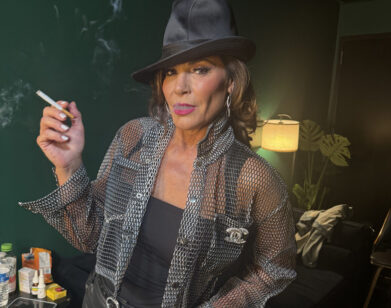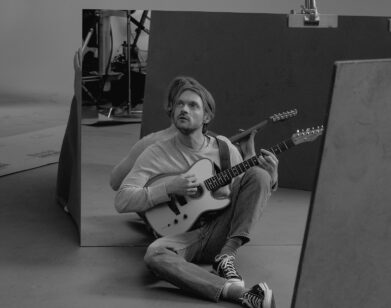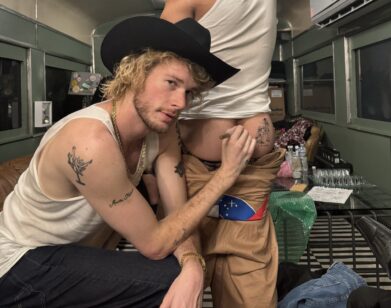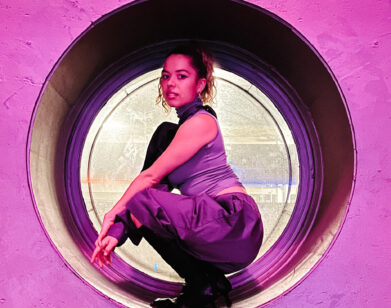Let Me Hear You 1, 2 Step
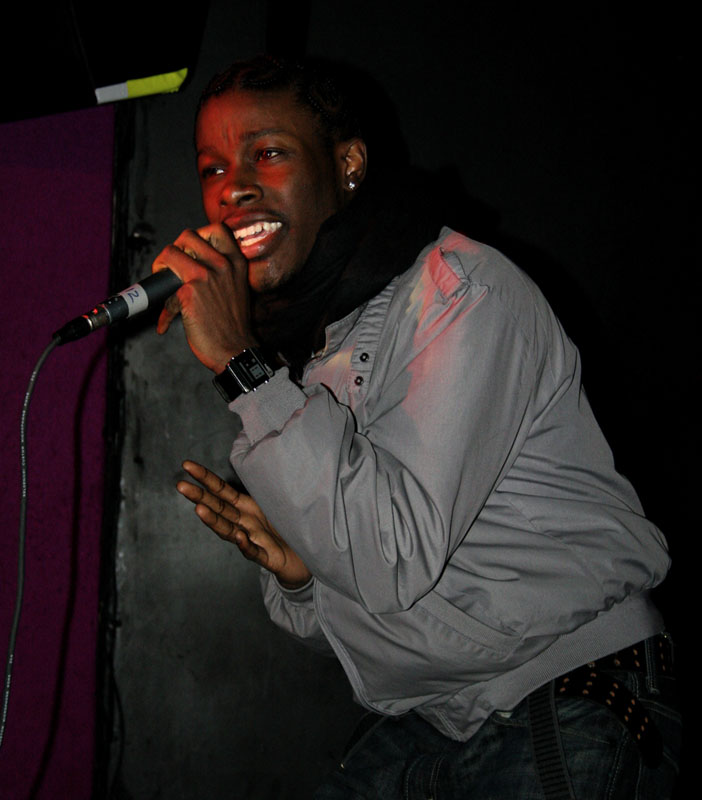
Photos by Pearse Daly.
27-year-old producer Travis Stewart is from North Carolina but lives in Brooklyn, and has been making music under different monikers for over a decade. He’s perhaps best known as Machinedrum, a name he was sure had been claimed when he adopted it in 1998. Stewart has since released six discs under that pseudonym alone—and three others under three different aliases. Three years in the making, Want to 1 2? is Stewart’s seventh Machinedrum record, and it’s due to drop mid-May. If you can’t wait for the hard copy, it’s already available for download on iTunes.
Comprising 21 tracks, this sixty-minute danceable album features a host of guest vocalists set against the backdrop of Stewart’s synth, and button-pushing, computer-controlled maneuvers. This past Friday night at Le Royale, upstairs Stewart stood tall, at six-foot-two, on a modest raised stage, his baby face peeking out from behind shoulder-length hair. An alligator claw talisman dangled from a chain around his neck. According to Stewart, these ethically questionable trinkets are sold all over Florida, even in gas stations. That’s where he got his, while studying audio engineering in Winter Park at Full Sail University.
Two emcees, San Diego-based rapper-with-Mohawk-and-mullet Addiquit and Brooklynite singer-songwriter Jesse Boykins III joined Stewart onstage, singing three songs each as Stewart mixed. Stewart even jumped on the mic from time to time during this 13-song set. While Stewart usually commands the crowd for up to an hour and a half, this 50-minute gig, which kicked off a little after 11 PM, wrapped up by midnight, in time for the space to transform from live venue to lounge. But that wasn’t the end of my love affair with Machinedrum; we met up Saturday afternoon to talk near the reservoir in Central Park.
NELL ALK: How long have you been making music? How did you get started?
TRAVIS STEWART: I’ve been making electronic music since I was 12. [I was] making music as soon as I knew how to make sounds on a piano. My parents had a baby grand, and the piano is still my favorite instrument. I look at it as a songwriting machine. My grandpa was in a country band in the ’50s and he still is; he plays the pedal steel, so I’ve always had him as a musical influence since an early age.
NA: What’s with the album title Want to 1 2? It’a the opposite of the Ciara song.
TS: It was a summation of the theme for the album: the relationship between sexual energy and dancing. That was the basis [of] the songwriting for the vocalists I worked with. The “Want to 1 2?” represents a question: “Do you wanna dance?”; “Do you wanna get it on?” Coincidentally, I found out not too long afterwards that in Detroit they actually say this. It’s a thing: “You want to 1 2?”
NA: Do you sing on the album at all?
TS: You’ll hear my voice on “In The Dust,” which is a track I wrote and sung on. I wasn’t happy with my vocal take. It’s actually really annoying for me whenever I record my own voice and have to mix [it] and hear it over and over. It’s something to get used to. I definitely foresee my voice appearing on future records more and more, because I like writing hooks.
NA: What’s with the wolf featured on your album cover? It has a mythical look.
TS: This is Fenris, the Norse wolf god who was raised by Odin and the other gods and then was challenged when he grew too large for his chains. He was challenged by his strength. They kept tying him with different things and he would break out of all of them. Then, they tricked him by putting together some kind of magic thread. He was like, “This is a joke.” He struggled with it and then bit off the god of war’s hand in anger. As punishment, they chained him to this mountainside. Then, the war of the gods, Ragnarök, ensued and Fenris broke free of his chains. His two sons freed him. He found Odin, battled him and ate him. Then, Odin’s son, as revenge, killed Fenris. Then, it was said that Fenris would one day return. A lot of people didn’t believe it. I believe that this is his return, through this album.
NA: With laser eyes!
TS: With laser eyes. He is broadcasting images of love and lasers.
NA: [LAUGHS] Love and lasers. Speaking of love and lasers, do you like the idea of people making love to your music?
TS: [LAUGHS] I think it’s appropriate. I want people to break out into orgies when they hear it.
NA: Do you make love to your own music?
TS: Sure.
NA: Moving on… What is your approach to songwriting?
TS: Everybody has their own approach. When you’re an electronic musician, the whole writing process just depends. Some people have a very live way of writing electronic music, very improvisational. They set up a lot of gear and do live takes. I’m concerned with having a specific kind of sound. There’s not one second that I haven’t put thought into. I put almost as much time into my live shows as I do into writing music, but they’re two completely different processes. Some people think the way I perform live is how I write songs, which isn’t true at all.
NA: What can people expect from your live performance?
TS: I try to combine DJ performance with live performance. Eventually I hope to have video going at the same time, so it’s gonna be sensory overload where you don’t know whether to watch the video or watch me or dance.
NA: What comes first, the lyrics or the music?
TS: I’m very inspired by early recordings of Michael Jackson demoing Billy Jean at his home studio for the first time. He was actually singing nonsense, kind of scatting, just trying to get the melody and the feel of it. He basically sings exactly what it’s like but nonsensical gibberish. Once you have the feel, the words come easily.
NA: In addition to making music and DJing, you also have a promotional event series.
TS: I have a party called Cassette that I started two years ago with some friends. Originally, the concept was [to] put together these events combining art installation, video, performance and dance party. We were originally throwing them at Galapagos, when it was Galapagos. We would start with music videos by different friends, short films by friends of friends. The performances would start right after that. There would be a DJ in one room and performance in [an]other and, eventually, [it] led to a dance party that went on really late. We were consistently doing them for about a year. I still throw those events now and then. I try to find venues that aren’t normally used.
NA: You’ve remixed a lot of artists. Any one stand out in particular?
TS: I did an official remix for Johnny Cash, which was an honor. It was a challenge at first, finding the right song. How do you pick a Johnny Cash song to remix? But, once I found “Bellshazzar,” it sounded perfect.
NA: Is there any one track that stands out to you on the album that is your favorite?
TS: That is really hard, but one of the songs that hits home for me is “In the Dust.” That’s one of the first real pop songs I ever wrote (except for the second verse, which Jesse wrote). Originally, the song was a lo-fi rock track that I recorded in Orlando under the name Spirit Gypsies. It was really interesting to see that grow into a Machinedrum kind of song.

